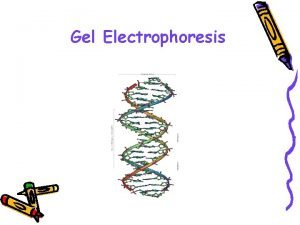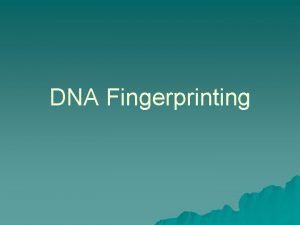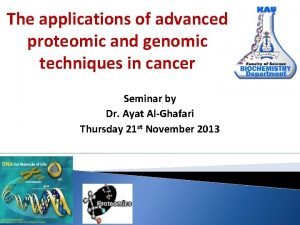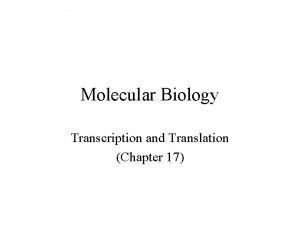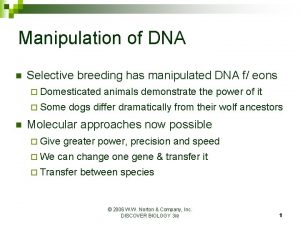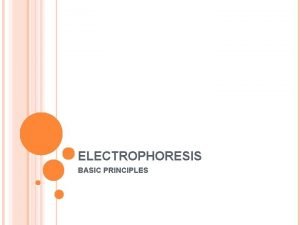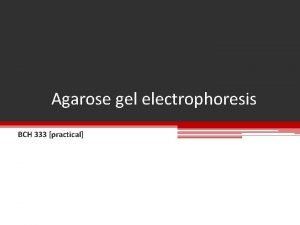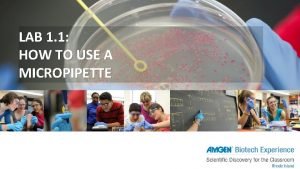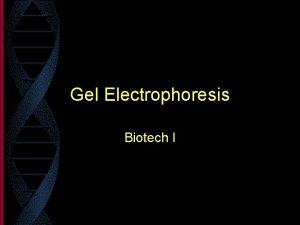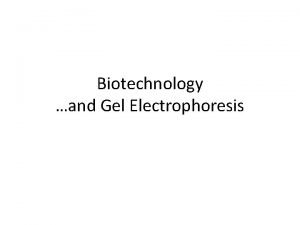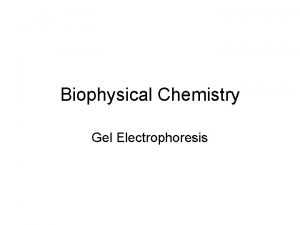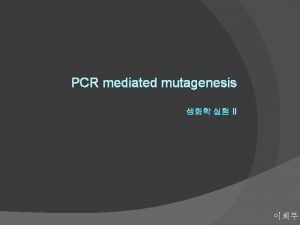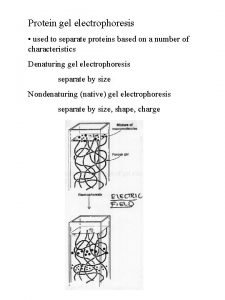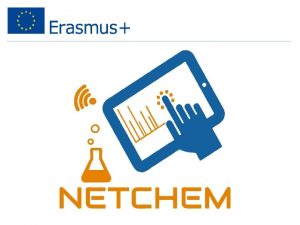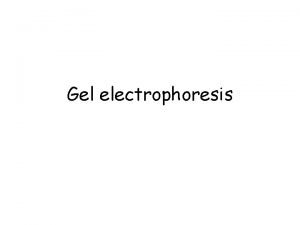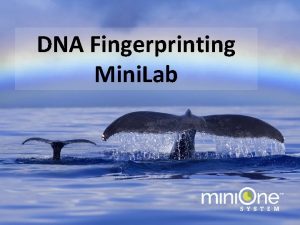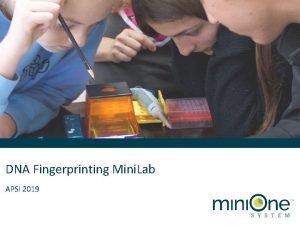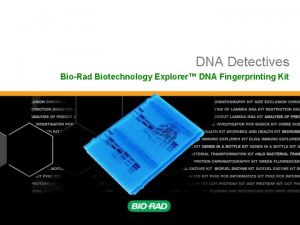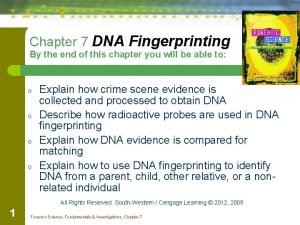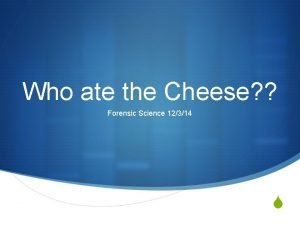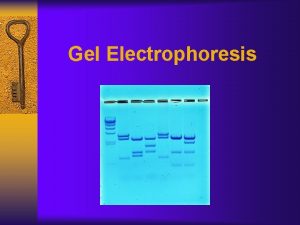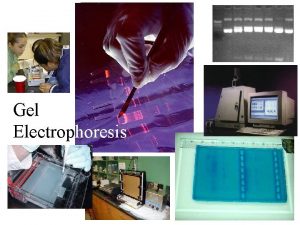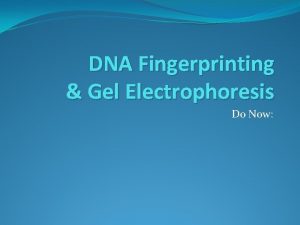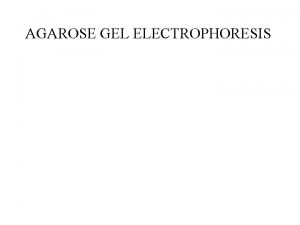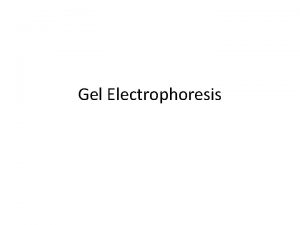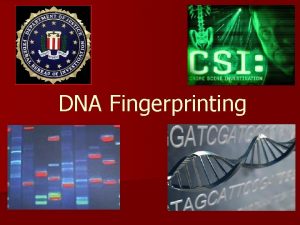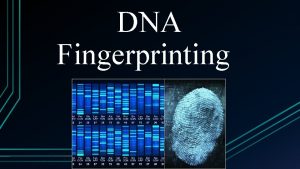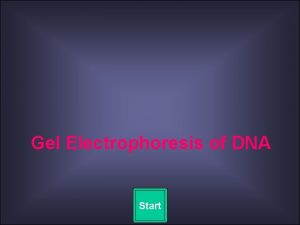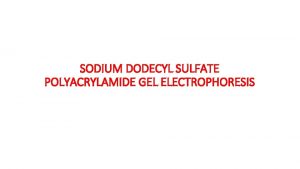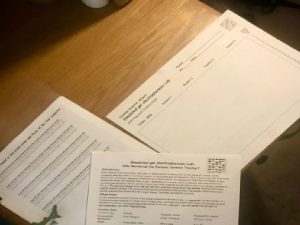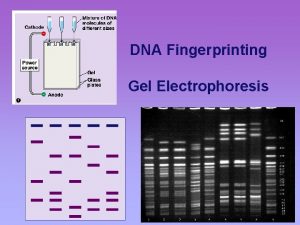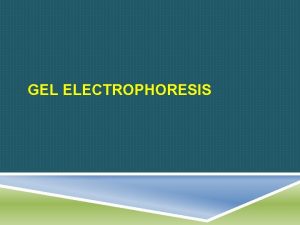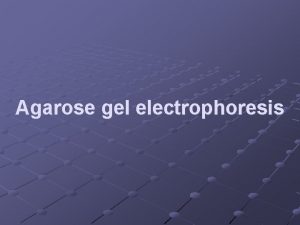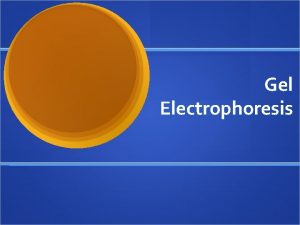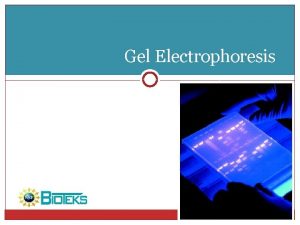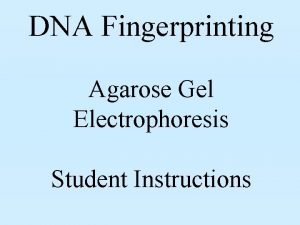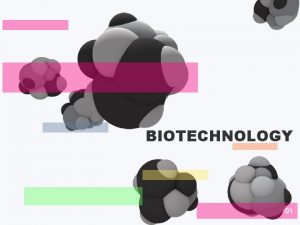DNA Fingerprinting and Gel Electrophoresis Notes March 1























- Slides: 23

DNA Fingerprinting and Gel Electrophoresis Notes March 1, 2017

DNA fingerprints • Made by cutting DNA in very specific places. • How do we cut DNA? I contain the • Restriction Enzymes code for making enzymes

I. DNA Fingerprinting ▫ Because no two individuals have identical DNA, no two individuals will have the same length fragments

II. Gel Electrophoresis A technique used to separate the DNA fragments according to their size A. DNA fragments are placed in wells on a sheet of agarose gel 1. Gel is slightly porous and allows fragments to move through the gel at a rate relative to their size … Like a plinko board

B. An electric current is applied to the sheet C. DNA is negatively charged and will move in an electric field toward the positive pole ▫ Which size fragments do you expect to move faster through the gel? 1. Smaller fragments move through the gel at a faster rate compared to the larger pieces

D. Bands will be produced on the gelatin where the fragments accumulate 1. The more fragments that accumulate in one spot, the thicker the line will be in the gel E. DNA bands must be stained to make them visible


III. Uses for DNA Fingerprinting and Gel Electrophoresis A. Used in forensics as a way to match a sample from a crime scene to a suspect’s DNA B. Used in paternity cases where the father is unknown 1. Each fragment in the child’s DNA must match at least one of the parent’s fragments 2. http: //www. sumanasinc. com/webcontent/a nimations/content/paternitytesting. html


Circle the largest… square the smallest.

Who are the parents of baby 1?

Who are the parents of baby 2?

Who are the parents of baby 3?

C. Genotyping 1. If a person was homozygous for a trait, the DNA would be cut by the same restriction enzyme in the same place because alleles are the same a. Fragments would be at the same point when run through a gel electrophoresis Allele from Mom Allele from Dad

2. If a person was heterozygous for a trait, the DNA would be cut by the same restriction enzyme in different places because the alleles are different a. Fragments would not be at the same point in the gel electrophoresis Allele from Mom Allele from Dad

YOUR TURN: Label the fragments by size (1 is largest) Dominant Allele from Mom Recessive Allele from Dad

Dominant Allele from Mom 1 Thicker because there are 2 sized “ 5” pieces 2 3 4 5 Recessive Allele from Dad In the first lane, sketch a heterozygous genotype

Dominant Allele from Mom Recessive Allele from Dad x 2 1 2 3 Thicker because there are 2 sized “ 5” pieces 4 5 In the second lane, sketch a HOMOZYGOUS DOMINANT genotype

Dominant Allele from Mom Recessive Allele from Dad x 2 1 2 3 Thicker because there are 2 sized “ 5” pieces 4 5 In the third lane, sketch a HOMOZYGOUS RECESSIVE genotype

Recombinant DNA intro

Recombinant DNA • Recombinant DNA contains DNA from 2 or more different sources. • So how does DNA get from one species to another? • Vector: something used to transfer DNA from one organism to another ▫ ▫ Microinjection Gene Gun Virus Bacteria Plasmid

Transgenics • Genetic engineering makes it possible to transfer DNA sequences from one organism to another • REMEMBER- DNA is universal • A gene taken from one species can be replicated in another species.

• So how do I take a gene from one organism and put it into another? • We have to cut it using a Restriction Enzyme
 How does dna move in gel electrophoresis
How does dna move in gel electrophoresis Why dna is negatively charged
Why dna is negatively charged Gel electrophoresis separates dna by
Gel electrophoresis separates dna by Endosmosis
Endosmosis Process of gel electrophoresis
Process of gel electrophoresis Translate image
Translate image Selective breeding definition biology
Selective breeding definition biology Disadvantages of electrophoresis
Disadvantages of electrophoresis Agarose vs acrylamide gel
Agarose vs acrylamide gel How to use the micropipette
How to use the micropipette Ap bio electrophoresis lab
Ap bio electrophoresis lab Vertical gel electrophoresis
Vertical gel electrophoresis Zone electrophoresis definition
Zone electrophoresis definition Electrophoresis definition
Electrophoresis definition Gel electrophoresis result
Gel electrophoresis result Disadvantages of agarose gel electrophoresis
Disadvantages of agarose gel electrophoresis Polyacrylamide gel electrophoresis
Polyacrylamide gel electrophoresis Polyacrylamide gel electrophoresis (page)
Polyacrylamide gel electrophoresis (page) Gel electrophoresis cathode anode
Gel electrophoresis cathode anode Dna fingerprinting minilab answers
Dna fingerprinting minilab answers Dna fingerprinting lab answer key
Dna fingerprinting lab answer key Bio rad dna fingerprinting
Bio rad dna fingerprinting Vntr vs str in dna fingerprinting
Vntr vs str in dna fingerprinting Who ate the cheese forensics
Who ate the cheese forensics

